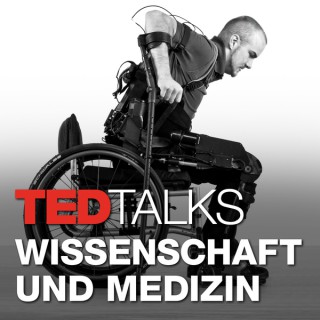Podcasts about mutlu pakdil
- 15PODCASTS
- 15EPISODES
- 16mAVG DURATION
- ?INFREQUENT EPISODES
- Jul 22, 2025LATEST
POPULARITY
Latest news about mutlu pakdil
- Humans Can Still Find Galaxies That Machine Learning Algorithms Miss Universe Today - Feb 11, 2023
Latest podcast episodes about mutlu pakdil
What will Chile's latest telescope tell us about the universe?
In Chile, a powerful new telescope has just given a taster of what we can expect from it later this year, when it will be used to survey the cosmos over a ten-year period. In one image it revealed vast colourful gas and dust clouds swirling in a star-forming region 9,000 light years from the Earth. Housed in the Vera C Rubin Observatory, which sits on a mountain in the Chilean Andes, the telescope is designed to get giant images of the sky about one hundred times larger and quicker than any other existing telescope can achieve. It contains the world's most largest digital camera, the size of a large car. When the Legacy Survey of Space and Time begins towards the end of 2025, the camera will film the entire Southern hemisphere night sky for the next decade, every three days, repeating the process over and over. And it will focus on four areas: mapping changes in the skies or transient objects, the formation of the Milky Way, mapping the Solar System and understanding dark matter or how the universe formed. So, on this week's Inquiry, we're asking, ‘What will Chile's latest telescope tell us about the Universe?'Contributors: Catherine Heymans, Professor of Astrophysics, University of Edinburgh, Astronomer Royal for Scotland, UK Željko Ivezić, Director of Rubin Construction, Professor of Astronomy, University of Washington, USA Dr. Megan Schwamb, Planetary Astronomer, Reader, School of Mathematics and Physics, Queen's University, Belfast, Northern Ireland Dr. Burçin Mutlu-Pakdil, Observational Astronomer, Assistant Professor, Physics and Astronomy, Dartmouth College, New Hampshire, USAPresenter: Charmaine Cozier Producers: Louise Clarke and Jill Collins Researcher: Maeve Schaffer Editor: Tara McDermott Technical Producer: Craig Boardman Production Management Assistant: Liam Morrey Image Credit: Anadolu via Getty Images
2306. 44 Academic Words Reference from "Burçin Mutlu-Pakdil: A rare galaxy that's challenging our understanding of the universe | TED Talk"
This podcast is a commentary and does not contain any copyrighted material of the reference source. We strongly recommend accessing/buying the reference source at the same time. ■Reference Source https://www.ted.com/talks/burcin_mutlu_pakdil_a_rare_galaxy_that_s_challenging_our_understanding_of_the_universe ■Post on this topic (You can get FREE learning materials!) https://englist.me/44-academic-words-reference-from-burcin-mutlu-pakdil-a-rare-galaxy-thats-challenging-our-understanding-of-the-universe-ted-talk/ ■Youtube Video https://youtu.be/QhsbxmTtQus (All Words) https://youtu.be/30bG75CocQw (Advanced Words) https://youtu.be/w8WWGu4Aq9Y (Quick Look) ■Top Page for Further Materials https://englist.me/ ■SNS (Please follow!)
How do you get a galaxy named for you? In this episode, we learn about the incredible life of Burçin Mutlu-Pakdil, who discovered a new type of galaxy now known as “Burçin’s Galaxy.” Since she was young, Burçin dreamed of studying the stars as an astrophysicist. But she faced many challenges to getting an education, because of what she wanted to wear. Burçin was determined to both be true to her beliefs, and become a scientist. Find out how she did it, and made a huge discovery that changes the way we think about the universe. Hear more from Burcin about her work on dark matter! Listen to our special bonus interview episode available for patrons who pledge $1 or more a month on patreon.com/tumblepodcast. Visit the blog on our website, sciencepodcastforkids.com, for more resources on this episode including videos, photos, and links to more galaxy science.
Learn about how astrophysicist Burçin Mutlu-Pakdil has defied odds—breaking cultural conventions and discovering a completely new kind of galaxy.
Speech Analysis - A rare galaxy that's challenging our understanding | Burçin Mutlu-Pakdil
Speech Analysis - A rare galaxy that's challenging our understanding | Burçin Mutlu-Pakdil
Where the conditions are right, life can arise. But what might the ‘right’ conditions be? Could the dark sector of our Universe be inhabited? That’s what Gautam from Delhi, India has been wondering. He points out that dark matter and dark energy make up around 95% of the Universe and the remaining segment is normal matter - the stuff we’re all made up of. Given that there’s so much of this dark material, could dark life have evolved? Marnie Chesterton investigates with Dr Matt Middleton, Dr Burçin Mutlu-Pakdil and Dr Renato Costa. Together, they unpick what dark matter and dark energy are and test out some listener theories as to what these mysterious mediums might be. For instance, Yoseph from Ogden, USA questions whether black holes could account for the missing matter and it turns out, he might just be on to something… Presented by Marnie Chesterton. Produced by Graihagh Jackson for BBC World Service. (Photo: Arrangement of Nebula, Stars and a colourful galaxy. Credit: Getty Images)
A rare galaxy that's challenging our understanding of the universe | Burçin Mutlu-Pakdil
What's it like to discover a galaxy -- and have it named after you? Astrophysicist and TED Fellow Burçin Mutlu-Pakdil lets us know in this quick talk about her team's surprising discovery of a mysterious new galaxy type. Hosted on Acast. See acast.com/privacy for more information.
Une galaxie rare qui défie notre compréhension de l'univers | Burçin Mutlu-Pakdil
Qu'est-ce que c'est, de découvrir une galaxie, et de lui donner son nom ? Dans cette conférence rapide, Burçin Mutlu-Pakdil, astrophysicienne et TED Fellow, nous informe de la découverte surprenante de son équipe d'un nouveau type mystérieux de galaxie.
A rare galaxy that's challenging our understanding of the universe | Burçin Mutlu-Pakdil
What's it like to discover a galaxy -- and have it named after you? Astrophysicist and TED Fellow Burçin Mutlu-Pakdil lets us know in this quick talk about her team's surprising discovery of a mysterious new galaxy type.
우리가 알고 있는 우주에 의문을 던지는 희귀한 은하 | 부르친 무틀루-팍딜 (Burçin Mutlu-Pakdil)
새로운 은하를 발견하고 본인의 이름으로 명명하는 기분은 어떨까요? 천체물리학자 겸 TED 펠로우로 활동하고 있는 부르친 무틀루-팍딜(Burçin Mutlu-Pakdil)은 이 짤막한 강연을 통해 그녀의 연구팀의 놀라운 발견인 신비에 가득 찬 새로운 종류의 은하를 여러분께 소개합니다.
Eine seltene Galaxie, die unser Verständnis des Universums infrage stellt | Burçin Mutlu-Pakdil
Wie wäre es, wenn Sie eine Galaxie entdecken, die nach Ihnen benannt wird? In diesem kurzen Vortrag erzählt die Astrophysikerin und TED Fellow Burçin Mutlu-Pakdil wie ihr Team, ganz überraschend, einen geheimnisvollen neuen Galaxientyp entdeckte.
Uma galáxia rara que está desafiando nosso entendimento do universo | Burçin Mutlu-Pakdil
O que é descobrir uma galáxia e tê-la nomeada com seu nome? A astrofísica e bolsista TED, Burçin Mutlu-Pakdil, fala nessa curta palestra sobre a descoberta surpreendente de sua equipe sobre um novo tipo misterioso de galáxia.
Una rara galaxia que desafía nuestro entendimiento del universo | Burçin Mutlu-Pakdil
¿Cómo se siente descubrir una galaxia... y que se la bautice con nuestro nombre? En esta breve charla, Burçin Mutlu-Pakdil ‒astrofísica y TED Fellow‒ nos habla del sorprendente descubrimiento realizado por su equipo: un misterioso y nuevo tipo de galaxia.
Dr. Burçin Mutlu-Pakdil talks about her amazing discovery-- a galaxy with both an inner and outer ring. The existence of such a galaxy had not been predicted before she discovered it, and there's no theory yet that can explain how such an unusual object was created.
Konuşmacımızın Özgeçmişi: Dr. Burcin Mutlu-Pakdil, 2009 yilinda Bilkent Universitesi Fizik Bolumu'nden mezun oldu. Texas Tech Universitesi'nde yuksek lisansini tamamladiktan sonra Minnesota Universitesi'nden Astrofizik uzerine doktorasini aldi. Galaksilerin yapilarini inceleyerek karadelikler ve iclerinde bulunduklari galaksilerin evrimi uzerine calismalar yapmaktadir. En son yaptigi calismayla ilk defa cift halka yapili bir eliptik galaksinin tanimini yapmistir. Bu calismasi dunya basininda buyuk yer almistir. Agustos 2017'den itibaren Arizona Universitesi'nde calismalarina devam edecektir. Yaptigi arastirmalari genis kitlelere ulastirabilmek icin Kuzey Carolina Doğal Bilimler Müzesi'nden bilim insanlariyla yuruttugu calismalarin yaninda, bilim dunyasinda kadinlarin yolunun acilmasi icin cesitli platformlarda aktif gorev almaktadir.


















